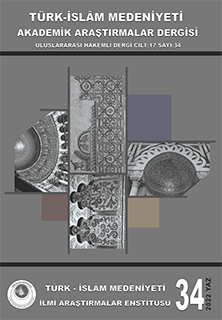An Outlook of Female Education in the Last Period of Ottoman Empire Modelled on the Journal of Sabīl ar-Rashād
Keywords:
Ottoman, Education, Women, The Journal of Sabīl ar-RashādAbstract
Declaration of Tanzimat (or so-called ‘Reorganization’) represents a starting point of promotion of female education and betterment of woman’s social status in Ottoman society. In this period, members of Ottoman intelligentsia and administrative class seem to understand that the improvement of the woman’s role will be crucial for the future of the society itself, and therefore enhancing of female education was deemed vital in order to restore her elevated status previously set forth by the religion of Islam. The Journal of Sabīl ar-Rashād, published during the period comprising the final era of Ottoman Empire and first years of the Republic, became a receptacle of many valuable and stimulating ideas. Its role in promoting female education cannot be
underestimated. In this study I will try to abolish the widespread preconception pertinent to the female education in Ottoman Empire by reviewing some discussions found in numerous issues of the Journal of Sabīl ar-Rashād. Accordingly, as an outcome of thourough scanning of all issues of the journal, I came across only two articles which can be considered as negative towards female education. Even though these articles are mainly centered on criticising mixed education. The idea that raising awareness about female education will eventually result in stronger and more stable society was not easy to establish. But once put into words by Sabīl ar-Rashād columnists, the idea of adequate female education and its direct effects on the wellbeing of the society slowly became an indisputable fact.
References
AKYÜZ, Y., 1999, “Türk Eğitim Tarihi”, Alfa Yayınları, İstanbul.
CEYHAN, A., 1991, “Sırat-ı müstakim ve Sebilürreşad Mecmuaları Fihristi”, Diyanet İşleri Başkanlığı Yayınları, Ankara.
ÇAVÎŞ, A., 1991, “Anglikan Kilisesine Cevap”, Çeviren: Mehmed Akif Ersoy, Diyanet İşleri Başkanlığı Yayınları, Ankara.
DULUM, S., 2006, “Osmanlı Devleti’nde Kadının Statüsü, Eğitimi ve Çalışma Hayatı (1839-1918)”, Yüksek Lisans tezi, Eskişehir.
EROĞLU, M., 1988, “Abdülaziz Çavîş”, DİA, Cilt:1, Sayfa: 187-188, Ankara.
İHSANOĞLU, E. (editör), 2006, “Osmanlı Tabii ve Tatbiki Bilimler Literatürü Tarihi”, Ircıca Yayınları, İstanbul.
İNAN, A. A., 1975, Tarih Boyunca Türk Kadınının Hak ve Görevleri, Milli Eğitim Basımevi, İstanbul.
--------- 2004, “Kur’an-ı Kerim ve Muhtasar Meali”, İlmi Araştırma Merkezi, Hayrat Neşriyat, İstanbul.
OKİÇ, T., 1981, “İslâmiyet’te Kadın Öğretimi”, Gaye Matbaacılık, Ankara.
Downloads
Published
How to Cite
Issue
Section
License

This work is licensed under a Creative Commons Attribution-NonCommercial 4.0 International License.







